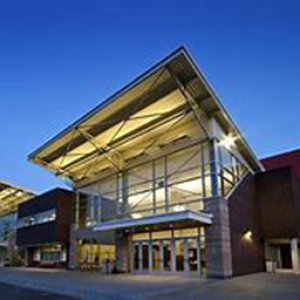Commercial
Florence LLC/Elevated Home Crafters Inc, 1321 Panners Pl, Com Fence/Roof/Siding, $27,295 s
Florence LLC/Elevated Home Crafters Inc, 1321 Panners Pl, Com Fence/Roof/Siding, $4,961 s
Florence LLC Elevated Home Crafters Inc, 1321 Panners Pl, Com Fence/Roof/Siding, $4,059 s
Glacier Bank/Kirkness Exteriors, 2401 Grand Ave, Com Fence/Roof/Siding, $33,000 r
Grifols Plasma Operations/ Ev Construction, 1310 Main St, Com Remodel, $1,700,000
Sisters Of Charity Of Leavenworth/Saunders Construction Inc, 1233 N 30th St, Com Remodel, $372,000
Hink, Gabriel C & Teresa A/Singh Contracting Inc, 1140 1st Ave N, Com Fence/Roof/Siding, $19,000
American Lutheran Church/Commercial Roofing Montana LLC, 5 Lewis Ave, Com Fence/Roof/Siding, $88,960
Davis, Gary L & Marilyn & Etal/All Seasons Roofing, 1 Macarthur Ave, Com Fence/Roof/Siding, $19,765
JMS Properties LLC/JMS Properties LLC, 24 Orchard Ln, Com Fence/Roof/Siding, $9,700
Centennial Park/Com New Other, 3302 Howard Ave, $66,169
SCL Health/Saunders Construction Inc, 2900 12th Ave N, Com New Other, $1,000
Aware Inc/Jackson Contractor Group Inc, 3242 Hesper Rd, Com Remodel, $200,000
G Rock Building LLC/Scott Peterson Construction, 2244 Grand Ave, Com Remodel, $2,000
Oliver Building Development Ve/Van Arsdale, Duane Construction Inc, 2702 Montana Ave, Com Remodel – Change In Use, $35,000
Smith, Lawrence/Millennium Construction & Consulting Inc, 446 Grand Ave, Demolition Permit Commercial, $17,000
Blanco, David/Askin Construction LLC, 320 Main St, Demolition Permit Commercial, $12,500
Residential
Stimpson, Clint/V.W.C. Inc., 2320 Meadowwood St, Res New Accessory Structure, $53,000
Infinity Home/Infinity Home LLC, 2419 Bonito Loop, Res New Single Family, $255,764
Infinity Home/Infinity Home LLC, 2410 Bonito Loop, Res New Single Family, $242,671
Ironwood Land LLC/Cougar Construction, 4211 Arrowwood Dr, Res New Single Family, $355,305
Oakland Built Homes Inc/Oakland Built Homes Inc, 808 Presidio Ln, Res New Single Family, $174,422
Oakland Built Homes Inc/Oakland Built Homes Inc, 816 Presidio Ln, Res New Single Family, $174,422
Mountain Range LLC/Formation Inc, 2522 Mountain Range Ct, Res New Single Family, $285,450
McCall Development Inc/McCall Development, 6121 Farmstead Ave, Res New Single Family, $247,394
McCall Development Inc/McCall Development, 6109 Farmstead Ave, Res New Single Family, $277,970
McCall Development Inc/McCall Development, 1620 Walter Creek Blvd, Res New Single Family, $270,252
NA/Had Inc, 2241 Entrada Rd, Res New Single Family, $187,322
Oakland Built Homes Inc/Oakland Built Homes Inc, 3149 70th St W, Res New Single Family, $186,708
The ATM LLC/ Billings Best Builders LLC, 6310 Absaloka Ln, Res New Two Family, $350,000
NA/InfinityHome LLC, 2205 Entrada Rd, Res New Single Family, $254,457
InfinityHome/Infinity Home LLC, 7020 Shiny Penny Way, Res New Single Family, $242,671
InfinityHome /Infinity Home LLC, 3128 Forbes Blvd, Res New Single Family, $200,348
Buscher Construction/Buscher Construction Ltd, 3139 Falcon Cir, Res New Single Family, $233,402
Copper Ridge West Inc/Bob Pentecost Construction, 3145 Forbes Blvd, Res New Single Family, $377,000
Bob Pentecost/Bob Pentecost Construction, 3021 Forbes Blvd, Res New Single Family, $346,900
Habitat For Humanity, Mid Yell/Habitat For Humanity, 1206 S Ping Cir, Res New Single Family, $200,000
Bruechert Homes/Dirk Arnold Construction, 1361 Tania Cir, $223,130
CDH, LLC/CDH, LLC, 2207 Greenbriar Rd, Res New Single Family, $339,333
HLL LLC/Montana Quality Contracting LLC, 2706 Tulane Dr, Res New Single Family, $385,000
Trails West Homes LLC/Trails West Homes LLC, 821 Grouse Berry St, Res New Single Family, $279,888
Trails West Homes LLC/Trails West Homes LLC, 815 Grouse Berry St, Res New Single Family, $227,838
NA/Trails West Homes LLC, 902 Grouse Berry St, Res New Single Family, $247,732
Trails West Homes, LLC/Trails West Homes LLC, 905 Grouse Berry St, Res New Single Family, $224,480
Trails West Homes, LLC/Trails West Homes LLC, 909 Grouse Berry St, Res New Single Family, $279,888
NA/McCall Development, 1715 St George Blvd, Res New Single Family, $140,698



